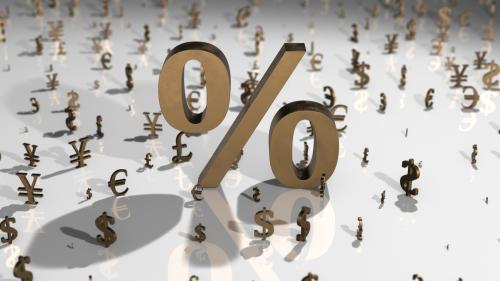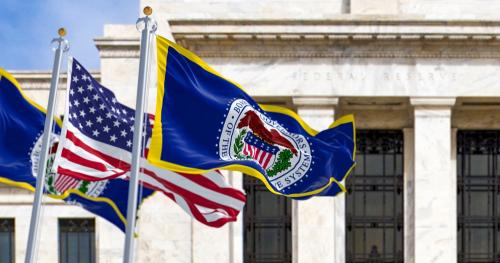In an essay written for a Richmond Federal Reserve Bank project honoring the late economist Marvin Goodfriend, Don Kohn takes a critical look at the monetary policy framework that the Federal Reserve unveiled in August 2020.
The Fed’s new framework—known as Flexible Average Inflation Targeting (FAIT)—grew out of a period in which inflation fell short of the 2 percent target and inflation expectations drifted down, despite very low interest rates and much lower unemployment than had previously been thought consistent with low, stable inflation. Keeping expectations from moving below 2 percent is especially important when the real equilibrium interest rate appears also to be quite low, making the zero low bound (ZLB) an increasingly salient policy constraint.
The FAIT framework is well designed to counter the disinflationary bias imparted by policy being constrained by the ZLB from time to time. FAIT promises to make up for inflation below 2 percent by aiming to run it “moderately above 2 percent for some time”—a flexible form of price-level targeting. That implies easier policies for longer than if the Fed were simply aiming to return inflation to 2 percent without the makeup. The point of the averaging is to make sure expectations are indeed anchored at 2 percent. In effect, deliberately aiming for inflation to exceed 2 percent for some time and likely allowing the overshoot of maximum employment necessary to achieve that results in an upward inflation bias that offsets the downward bias arising from the ZLB.
But there are other asymmetries in the new framework that lean toward taking upside risks on inflation and raise questions about how well adherence to the framework would anchor expectations in circumstances in which inflation wasn’t so quiescent.
One key problem is that the strategy does not address what is to happen if there are persistent overshoots of the 2 percent target. A framework that addresses making up for undershoots but not overshoots would seem to risk a bias toward inflation over 2 percent if circumstances differ materially for a time from the disinflation pressures of 2009-19.
A second upside inflation bias arises from the asymmetry of the response to deviations of labor markets from estimates of maximum employment. In the past, the Fed increased the federal funds rate by enough to head off possible future inflation when projections suggested that declines in the unemployment rate in the absence of tightening were likely to result in future above-target rates of inflation—even before inflation or inflation expectations had risen into unacceptable territory. Lags in the effects of monetary policy made such preemptive moves desirable to avoid having to impose future output losses to bring inflation back down. In the new framework, the Fed will continue to get ahead of unwelcome declines in inflation by running accommodative policy when it judges there to be slack in labor markets, but its scope to head off future unwanted increases in inflation would appear to be more constrained, risking overshoots of the target under some circumstances and the resulting greater variability in output.
To the credit of the Federal Reserve, as the persistence of inflationary pressures became increasingly evident in late 2021, it pivoted quite rapidly toward an accelerated removal of the extreme accommodation it had put in place in the initial stages of the pandemic. It began to reduce its purchases of securities sooner and more rapidly than it had previously expected, and it is clearing the way for beginning to raise its target interest rate in March 2022, also much sooner than it or many observers had expected as recently as summer 2021. Although measures of short- and medium-term inflation expectations have risen to well above 2 percent, longer-term expectations remain anchored at levels consistent with 2 percent, suggesting the Federal Reserve retains credibility for achieving its long-run objective over time.
Still, this experience suggests that the asymmetries of the new framework could risk an upward drift from the 2 percent inflation anchor when the surrounding macroeconomic circumstances deviate from the damped demand, low-inflation environment of 2009-19. The Fed needs to consider and then spell out its approach to achieving its price stability goal if the prior disinflationary forces do not reemerge. To be sure, the Fed can never anticipate and discuss all the situations it might face in the future. But it should be able to describe in a general way how it would expect to react if, for example, inflation persisted above its target and expectations began to drift higher despite estimated slack in labor markets or if wages and prices suggest that labor markets are approaching a level of “maximum employment” that is lower than previously expected.
Read the full essay here.
The Brookings Institution is financed through the support of a diverse array of foundations, corporations, governments, individuals, as well as an endowment. A list of donors can be found in our annual reports published online here. The findings, interpretations, and conclusions in this report are solely those of its author(s) and are not influenced by any donation.
The Brookings Institution is committed to quality, independence, and impact.
We are supported by a diverse array of funders. In line with our values and policies, each Brookings publication represents the sole views of its author(s).





Commentary
Op-edAssessing the Federal Reserve’s new monetary policy framework
March 15, 2022